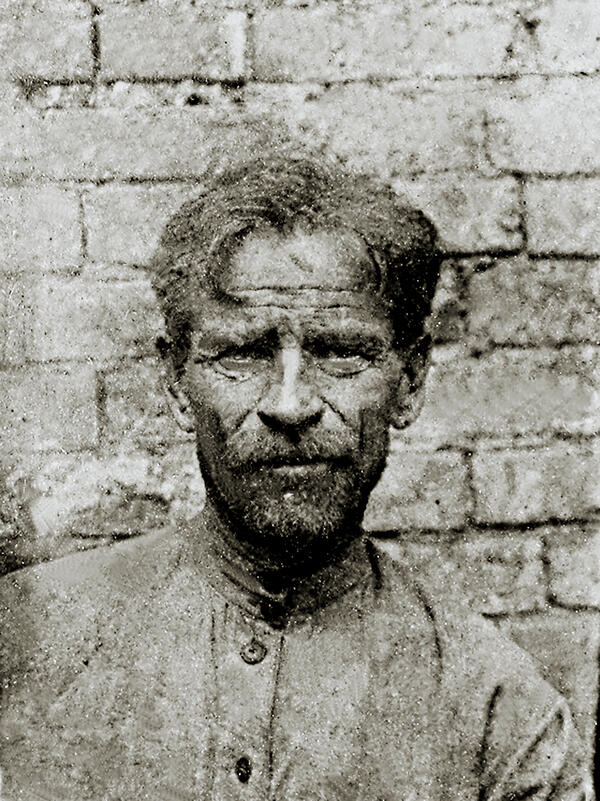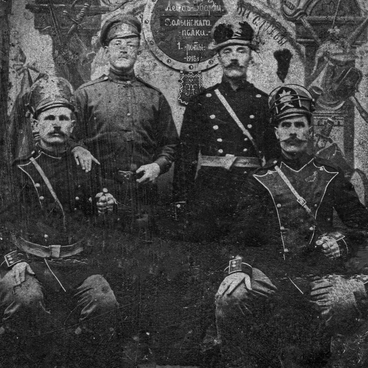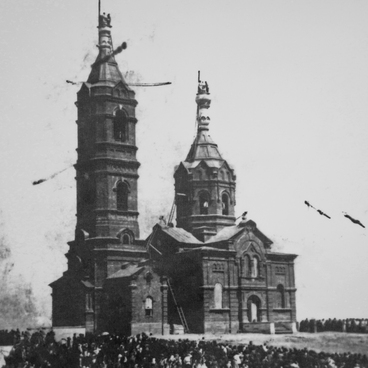After the front line moved from the present-day Orenburg region to the east, towards Orenburg, during the 1919 spring offensive of Kolchak’s army, there was a threat of its transfer into the hands of the Cossacks. Orenburg was of great strategical importance - both as a railway junction and as the capital of the Orenburg Cossack army, the center of the first military district. Whoever controlled a center, a particular military district or in whose hands the military capital rested was important for Cossack psychology. In many ways their decisions around whether or not to fight against the Bolsheviks revolved around this.
The elimination of the Orenburg route and exit route to Samara in the spring and summer of 1919 could have given the White movement a huge release of force. It would have significantly shortened the front, simplified supply lines (there was now the possibility of using rail), broken up the impending Red Army counterattack from Buzuluk, Sorochyntsi and Mikhaylovskoye (Sharlyk) and given them the opportunity to connect with Denikin’s forces. One of the most serious attempts to capture Orenburg was made by the 4th corps commanded by General Andrei Bakich. Orsk resident Luka Maksimovich Terekhov, who had been a treasurer, fought in this corps. General Khanzhin, who commanded the Western Army, reported the following to Kolchak: ‘In battle on 26 April, the transported regiments of the 2nd and 5th divisions were attacked by significant enemy force. By nightfall, our ranks were driven to the river (Salmysh) and thrown down into it. The small number of riflemen who got to the left bank of the Salmysh in the morning had lost practically all of their weapons and clothing.’
A participant in this battle, the commander of the 1st battalion of the 277th regiment of the Red Army, Mikhail Ivanovich Shalin, would later write that in this battle the White Army came up against the 277th (formerly 1st) Orsk rifle regiment totaling 1,286 men, supported by the 211st Kursk regiment of the 24th Iron division. An order from the Revolutionary Military Council of the Soviet Republic №126 of 9 July 1919 stated: ‘Awarded with Honorary Revolutionary Red Banners: The 277 rifle regiment 31st rifle division. 26 April 1919… this regiment was captured 1000 people, 3 3inch guns with full operating team and a few ammunition packages, 15 machine guns, wagons and many other pieces of military equipment. Thanks to this rout of the enemy’s 2nd and 5th divisions, the 277th regiment made it possible for us to hold onto the Orenburg Region, which is of the utmost importance to us. On behalf of the Chairman of the Military Revolutionary Council of Republic, E. Sklyansky, and Commander-in-Chief of all the armed forces of the Republic, Vācietis.’
After the end of the civil war, Luka Maksimovich Terekhov, just as many other people who had participated in military action on behalf of the White movement, faced repression. He was arrested for the first time 5 September 1921 and sentenced 12 July 1922 by the Omsk Provincial Revolutionary Tribunal to three years of imprisonment involving forced labor on probation. He was arrested and sentenced for the second time (this time to death) by the Troika under the auspices of NKDV in Orenburg Oblast on 11 September 1937.
The elimination of the Orenburg route and exit route to Samara in the spring and summer of 1919 could have given the White movement a huge release of force. It would have significantly shortened the front, simplified supply lines (there was now the possibility of using rail), broken up the impending Red Army counterattack from Buzuluk, Sorochyntsi and Mikhaylovskoye (Sharlyk) and given them the opportunity to connect with Denikin’s forces. One of the most serious attempts to capture Orenburg was made by the 4th corps commanded by General Andrei Bakich. Orsk resident Luka Maksimovich Terekhov, who had been a treasurer, fought in this corps. General Khanzhin, who commanded the Western Army, reported the following to Kolchak: ‘In battle on 26 April, the transported regiments of the 2nd and 5th divisions were attacked by significant enemy force. By nightfall, our ranks were driven to the river (Salmysh) and thrown down into it. The small number of riflemen who got to the left bank of the Salmysh in the morning had lost practically all of their weapons and clothing.’
A participant in this battle, the commander of the 1st battalion of the 277th regiment of the Red Army, Mikhail Ivanovich Shalin, would later write that in this battle the White Army came up against the 277th (formerly 1st) Orsk rifle regiment totaling 1,286 men, supported by the 211st Kursk regiment of the 24th Iron division. An order from the Revolutionary Military Council of the Soviet Republic №126 of 9 July 1919 stated: ‘Awarded with Honorary Revolutionary Red Banners: The 277 rifle regiment 31st rifle division. 26 April 1919… this regiment was captured 1000 people, 3 3inch guns with full operating team and a few ammunition packages, 15 machine guns, wagons and many other pieces of military equipment. Thanks to this rout of the enemy’s 2nd and 5th divisions, the 277th regiment made it possible for us to hold onto the Orenburg Region, which is of the utmost importance to us. On behalf of the Chairman of the Military Revolutionary Council of Republic, E. Sklyansky, and Commander-in-Chief of all the armed forces of the Republic, Vācietis.’
After the end of the civil war, Luka Maksimovich Terekhov, just as many other people who had participated in military action on behalf of the White movement, faced repression. He was arrested for the first time 5 September 1921 and sentenced 12 July 1922 by the Omsk Provincial Revolutionary Tribunal to three years of imprisonment involving forced labor on probation. He was arrested and sentenced for the second time (this time to death) by the Troika under the auspices of NKDV in Orenburg Oblast on 11 September 1937.



